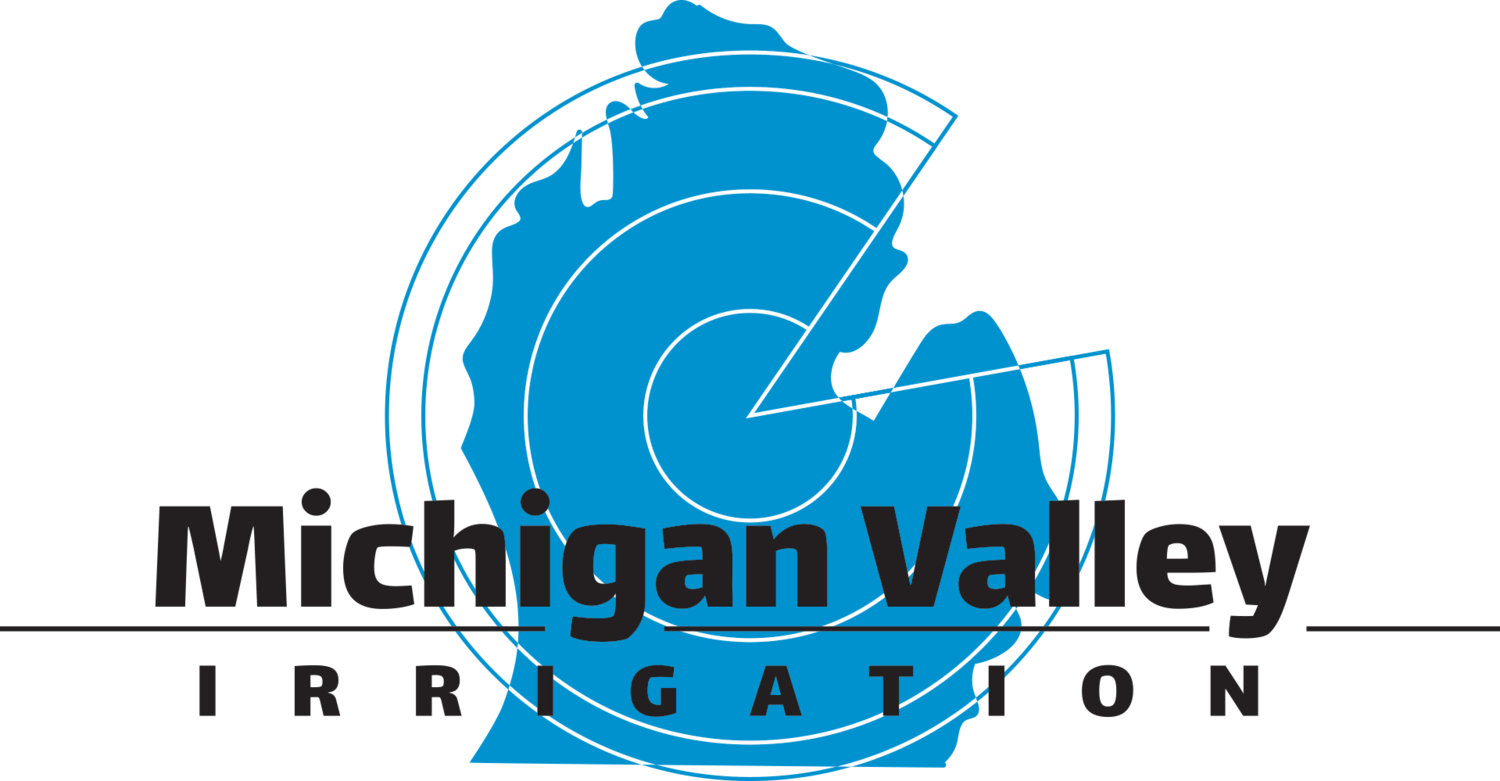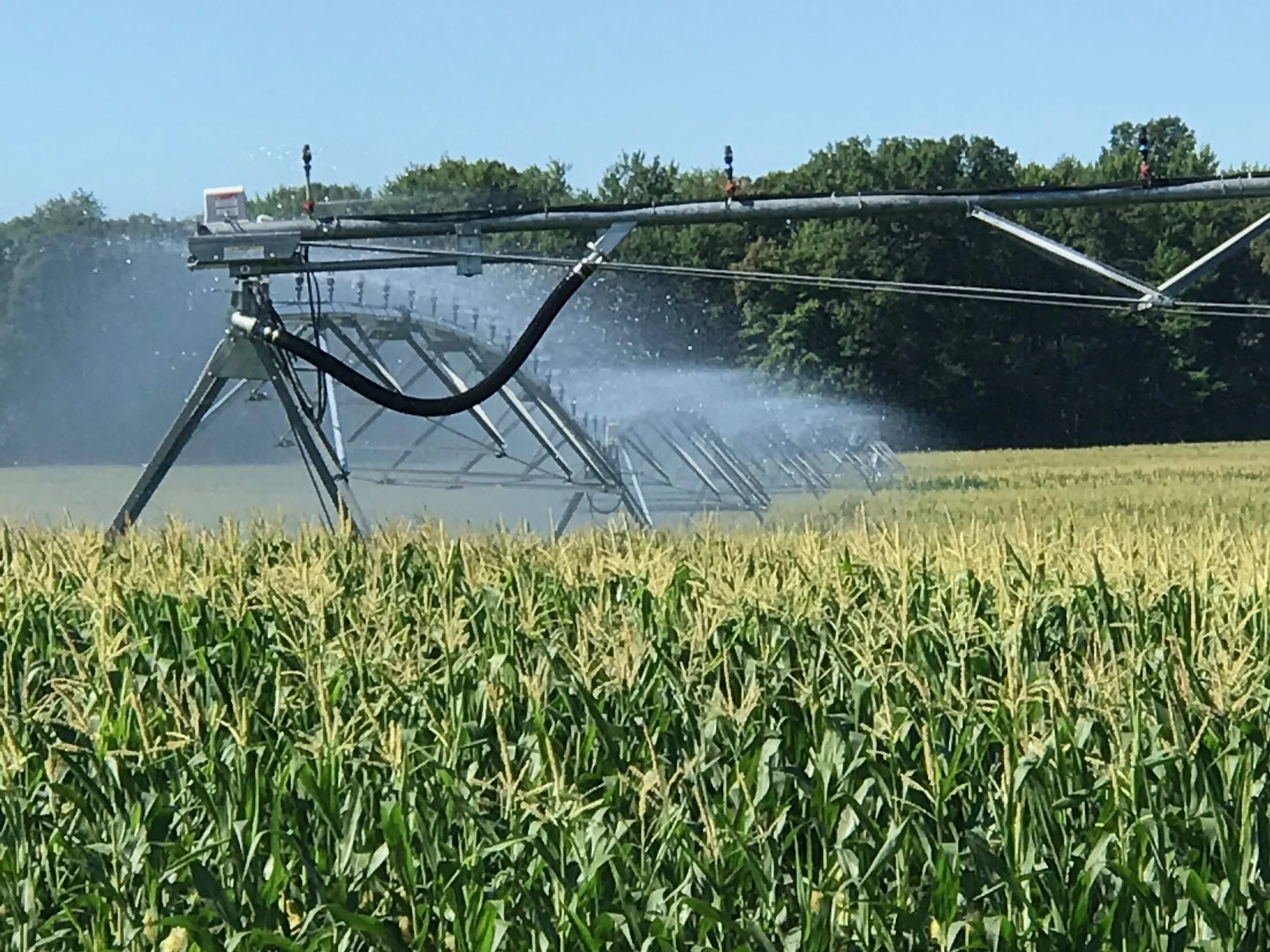Will Center Pivot Irrigation Benefit My Farm?
While Michigan is a supplemental irrigation state, meaning we generally get enough water to make a crop, the additional yield gained from timely water application can have a positive impact on your profitability. The following information is designed to help you consider some of the key factors in determining if investing in center pivot irrigation is a viable option to consider.
Basics:
Adequate access to water
Options for Power
Field size and Configuration
Topographical Limitations
Potential Gains from Crop Yield and Quality
While center pivot irrigation is a significant investment in your farm, there is generally the potential for a favorable return on investment. So where do I start?
Water Access
In the state of Michigan two questions must be answered for a large volume water withdrawal (> 70 Gallons / Minute). Can I have the water? Permission from the EGLE (DEQ)
Can I get the water? Either surface withdrawal from a lake or stream or groundwater from a well.
As a general rule, multiply the acres you wish to water by 5.5 and that number in gallons per minute is a nice goal. If that number can be achieved, most crops can be adequately watered even under significant drought conditions.
Power Source
In most parts of Michigan three phase power from the grid is the most economical power. The best scenario is to have your largest motor, which is almost always the water pump closest to your power supply. It is very common to utilize phase converters on a single phase line, if three phase is not available. There are several other options for powering center pivots like diesel or natural gas engines in remote areas.
Field Size and Configuration
While very few of us have round fields, the center pivot industry has made several options available to pick up additional acres. The most economical machines are long and make a full circle. Having an experienced designer provide you with several options can make an unusual field much more cost effective. You might be surprised how many acres benders, corner arms, drop spans and even uniquely placed pivot points can add to an initial layout.
Topographical Limitations
I have heard countless farmers state that their fields are too hilly for a pivot. Good measuring, strategic placement of wheel tracks and shortening spans can greatly improve the structural stress and climbing capacity of todays pivots. While different brands are designed for specific advantages, it is important to review slope limitations and crop clearances for the brand and model you are considering. With a few adjustments in design, many fields can be covered that at first glance appear to be too hilly.
Crop Yield and Quality
When pushing the pencil on financial returns, higher value crops generally have an advantage, simply because every unit is worth more. Every farm and every manager needs to evaluate their specific situation. Soil type and drainage are also important factors. If you were to look at annual precipitation in Michigan since the year 1900, without exception there are wide swings in precipitation from year to year. We nearly always get enough rainfall every 2 years, but it is seldom adequate during the growing season. If you can consistently add a 25 to 50 percent increase in yield, will that pay for your investment in irrigation? If you can eliminate or at least minimize the impact of a severe drought on your farm, how much is that worth to your bottom line and peace of mind?
Summary
The best way to look at center pivot irrigation is to consider it a long-term investment in your farm. Center pivots in Michigan can water your fields for 40 years or more. Very few other investments can generate cash flow and last that long. It can also be considered a risk management tool. I recommend that you first start with water. If you can have and can find available water, then proceed. If not, get some experienced help to pursue further. If you have the power grid readily available, then you are one more step closer. Next consider some field options and engage an irrigation dealer with capable & certified designers to determine the best plan to build infrastructure and cover one or more fields. Remember that your initial project will likely be more costly per acre, but as you develop multiple sites, good planning can substantially lower those unit costs. At this point I would look to engage my agronomist and review soil types, crop selection, response from supplemental irrigation and the potential benefits from applying some of your crop inputs with your center pivot. Now you should be well equipped to do some number crunching and determine the best path for your business.
About the Author
Pete is the marketing manager for Michigan Valley Irrigation, having joined the company in 2016. He was raised on a dairy farm in western New York and graduated from Cornell University with a B.S. in agricultural economics. His entire working career of over 37 years has been involved in agriculture. A farmer helping farmers. When away from Michigan Valley he operates, Joyful Noise Farm, a small livestock and produce farm and spends time with his family.





